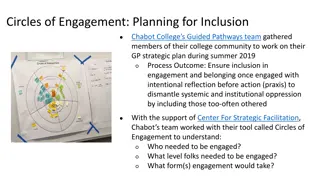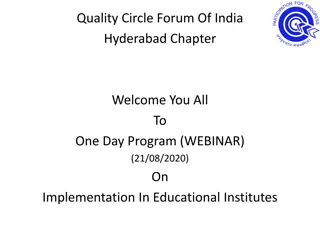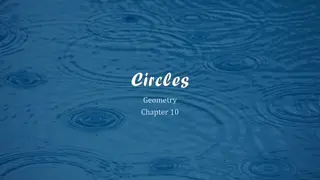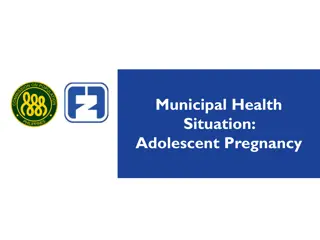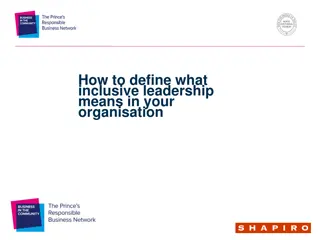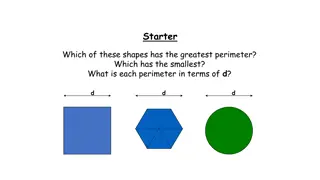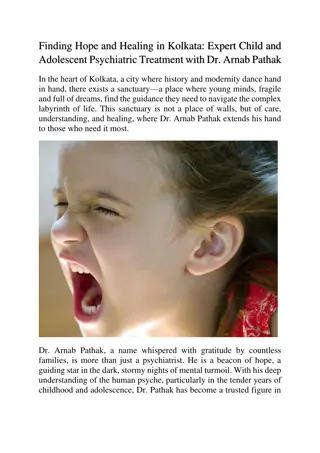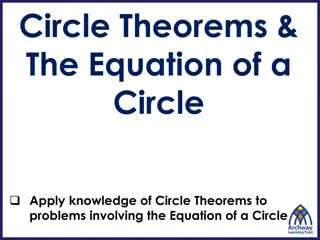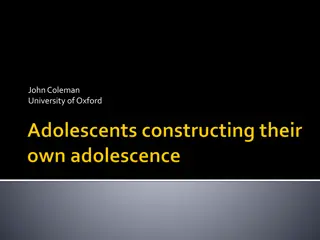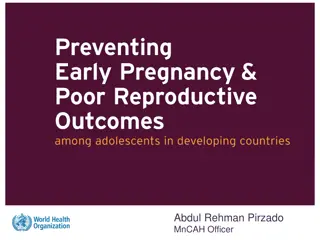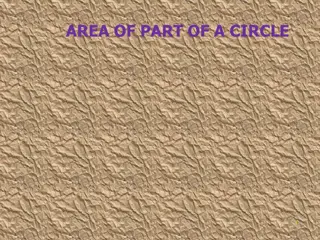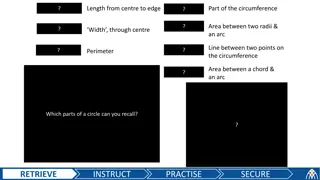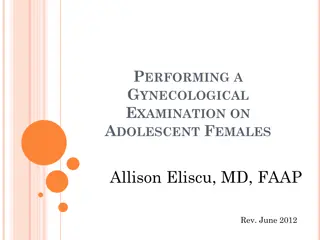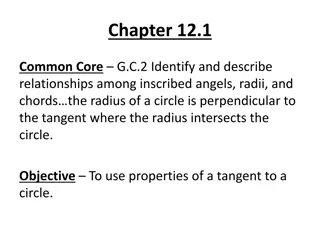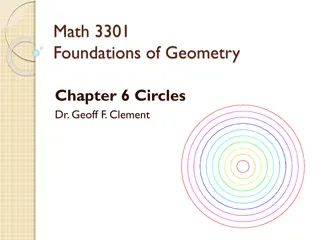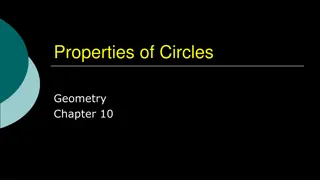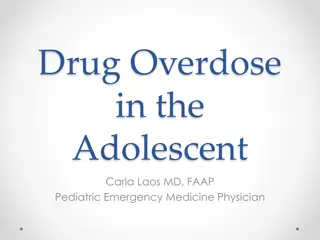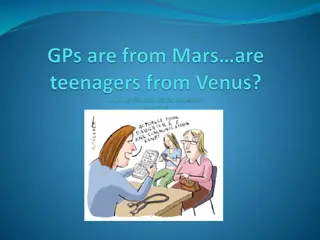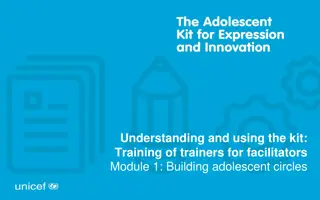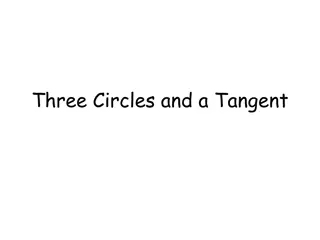Building Strong and Inclusive Adolescent Circles: A Guide for Facilitators
Engage adolescents in forming circles to learn, express themselves, and take action in their community. Discover the benefits of circles, such as inclusivity, shared identity, and flexibility. Explore key considerations for forming strong circles, including group size, age, gender, diversity, and facilitator support.
Download Presentation

Please find below an Image/Link to download the presentation.
The content on the website is provided AS IS for your information and personal use only. It may not be sold, licensed, or shared on other websites without obtaining consent from the author.If you encounter any issues during the download, it is possible that the publisher has removed the file from their server.
You are allowed to download the files provided on this website for personal or commercial use, subject to the condition that they are used lawfully. All files are the property of their respective owners.
The content on the website is provided AS IS for your information and personal use only. It may not be sold, licensed, or shared on other websites without obtaining consent from the author.
E N D
Presentation Transcript
Understanding and using the kit: Training of trainers for facilitators The Adolescent Development and Participation Module 3: Building Adolescent Circles Section Priya Marwah, Adolescents in Emergencies and Peacebuilding Specialist Ellen Fransen, Programme Assistant Juliet Young, Consultant
What are Adolescent Circles ? A basic approach recommended in the Adolescent Kit for Expression and Innovation is to support adolescents in forming and working together as a circle. An Adolescent Circle is a group of adolescents who gather to learn, practice skills, express themselves, build a team, and take action in their community. Working as a circle creates opportunities for adolescents, especially those living in crisis situations, to have fun, recover from difficult experiences, explore, be creative, make friends, and work together on interesting projects.
Why a circle? (continued) Everyone fits in a circle - no one is more or less important. Each member brings their ideas and skills to the circle, and helps to strengthen it. By listening and supporting each other, they keep the circle connected. Circles work together to achieve group goals. This unites participants. Ideally, they develop a shared identity as members of their circle, even if their ethnic, religious, caste, or other identities differ. This shared identity needs to be fostered with care. Circles are strong because they are flexible. If a member needs to step out of the circle to help their family, work, or respond to other situations the circle shrinks but remains intact. Include all adolescents
Discussion Why a circle ? What does a circle represent to you? What does a circle represent in our cultural context? In what ways could a circle represent a safe, inclusive group of people? Should we use the term circle, or another term, for groups of adolescents that we will organize in our programme? ?
Forming a strong circle: Recommendations Action planning How many adolescents will we include in each circle? How will we group adolescents with those of similar or different ages, genders and other identities into circles? What planning steps and choices do we need to take in order to have an optimal ratio of facilitators to adolescents? Size: Seven to 25 adolescents per circle. Age: Group adolescents of similar ages together. Gender: Separate groups for girls and boys often work well. Diversity: Whenever possible, include adolescents from different backgrounds in the same circle to build connections. Include adolescents with and without disabilities in the same circle. Never form disabilities-only circles. Support: One or two facilitators per circle.
Discussion: How will we include all adolescents in circles in our programme? What is the difference between reaching and including adolescents? Finish this sentence: When an adolescent is truly included in a programme, he or she Include all adolescents
Discussion: (These questions will be especially relevant for anyone who has worked as a teacher or facilitator directly with a group of adolescents, on this or any other programme.) When each of us have worked with a group of adolescents, what are some signs that we have seen that they are starting to work well together? What are some proactive strategies we each use to try to help adolescents build a sense of teamwork?
Agreeing to Group Rules Clarification: group rules vs. group goals Group rules focus on how they will spend their time together and work together. Group goals focus on what adolescents want to achieve together.
Discussion: (These questions will be especially relevant for anyone who has worked as a teacher or facilitator directly with a group of adolescents, on this or any other programme.) Why should adolescents form their own group rules? Is this something you already do? How do you guide them through the process? What do you when adolescents suggest a rule that you think might not be helpful? How do adolescents use and enact their own rules?
Looking ahead: Reviewing Group Rules A key recommendation is for each adolescent circle to periodically review, discuss and (perhaps) revise their own rules. Giving adolescents a chance to review their group rules puts them in the lead to build their own strong Circle. This is a proactive strategy it helps adolescents learn how to manage conflicts and puts them in the lead.
3.3 Support and structure for Adolescent Circles: Eight Session Steps
Discussion: (These questions will be especially relevant for anyone who has worked as a teacher or facilitator directly with a group of adolescents, on this or any other programme.) As a facilitator, is this already part of how you plan sessions? What steps do you include in each session? If so, what benefit does this structure have for adolescents? Recommendation: Plan activity sessions for adolescent circles that include with consistent, predictable steps. Provide structure and support
Session steps: .Create structure, routine and predictability to support adolescents .Give facilitators a chance to monitor adolescents progress and listen to their perspectives and experiences Should create a comfortable flow, but should not be used too rigidly.
Discussion: Which steps do you already include when planning sessions for adolescents? Which of the Ten Key Approaches do you see reflected in this practice of consistently planning sessions using these eight steps? Reminder: Structure does not mean lecture. Sessions can include periods of time for adolescents to practice or work on projects individually, or work together on group projects without direct guidance from the facilitator, especially in the challenge step.
Group work/action planning: What support do adolescents in our programming context need? 1) Food, water and essential supplies 2) Health care services Provide structure and support 3) Education, learning and information services 4) Protection and legal support 5) Arts, recreation and sports 6) Clubs and organizations With respect to each of the above categories of service or support What are the needs of adolescents in our programme contexts? What services or support are available for them? (Be as specific as possible!) Build connections
Group work/action planning: What support do adolescents in our programming context need? 1) Food, water and essential supplies 2) Health care services Provide structure and support 3) Education, learning and information services 4) Protection and legal support 5) Arts, recreation and sports 6) Clubs and organizations With respect to each of the above categories of service or support What are the needs of adolescents in our programme contexts? What services or support are available for them? (Be as specific as possible!) Build connections
Group work/planning discussion: What (further) information do adolescents in our programming context need to access these services? 1) Food, water and essential supplies 2) Health care services 3) Education, learning and information services 4) Protection and legal support 5) Arts, recreation and sports 6) Clubs and organizations
Action planning: How will we find and add any information about services, support or organizations for adolescents that we do not already have? How will we share this information with adolescents who participate in our programme?



